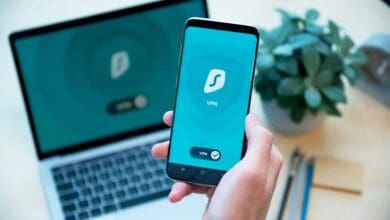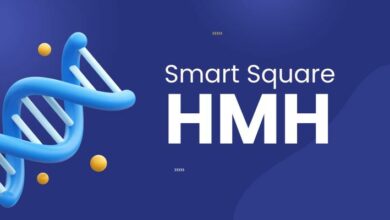
In the competitive market of education, there’s a revolutionary force at play – Immersive Learning. It’s a world where learning isn’t confined to textbooks and lectures but extends into a realm where knowledge is not just acquired but lived. Let’s dive deep into the transformative power of immersive learning, exploring how it goes beyond conventional methods to seal the knowledge gap.
The Traditional Learning Conundrum
Before embarking on the immersive journey, let’s acknowledge the age-old struggle: the knowledge gap. In traditional learning settings, students often find themselves grappling with a divide between theory and application. It’s like having a toolbox filled with tools but not knowing how to use them to build something meaningful. Enter immersive learning, the game-changer that transforms theoretical knowledge into a hands-on, real-world adventure.
Immersive Learning In Action
Let’s take a moment to envision a classroom where students aren’t just passive observers but active participants in their learning journey. Immersive learning makes this possible by using technologies like virtual reality (VR) and augmented reality (AR) to create a virtual learning environment.
This allows learners to interact with their surroundings in a way that feels like being in an actual learning situation. This immersive experience transforms abstract concepts into tangible understanding, eliminating the gap between theory and practice.
Breaking Down Complex Concepts
Immersive learning helps in breaking down complex concepts in several ways. First, it can make the learning content more accessible and engaging for the learners, as they can grasp the main points and details of the concepts without feeling overwhelmed. Second, it enhances the learning outcomes and retention, as the learners can connect the concepts to their prior knowledge and experiences and apply them to realistic scenarios. Third, it promotes critical thinking and problem-solving as the learners can analyze the concepts from different perspectives and explore their implications.
Learning By Doing
People learn the best by doing something. The same goes for the case of immersive learning. Take a language learning scenario. Instead of memorizing vocabulary lists, immersive learning can help you immerse in a virtual market where you engage in conversations with native speakers. Directly talking to speakers will give students a real-life experience that doesn’t wash out from their memories easily.
This experiential learning allows learners to create new knowledge, solve problems, innovate solutions, and, most importantly, take ownership of their learning. Ultimately, this makes the learners more skilled and bridges the knowledge gap.
Fostering Collaboration And Communication
In the professional arena, effective collaboration and communication are often the linchpins of success. Immersive learning doesn’t just stop at individual skill enhancement; it extends to team dynamics. Using this technology, different projects and workshops can be set up that require teamwork. Multiple individuals from different departments in the organization can collaborate on these projects to execute them the right way.
Enabling collaboration between different teams and individuals will initiate a knowledge-sharing process where everyone will get exposure to the other side of the coin. Such practices will help fill the knowledge gap by letting individuals see things from others’ perspectives. And not only the knowledge gap, it will also eliminate the silos between teams.
The Immersive Learning Ecosystem
To truly appreciate the impact of Immersive learning, you must view it as an ecosystem rather than a standalone tool. It is an interconnected web where virtual reality, augmented reality, simulations, and interactive scenarios collaborate to design a streamlined learning experience.
It’s not a one-size-fits-all solution; it’s a dynamic, adaptable framework that meets learners where they are, guiding them through a personalized learning strategy. With a strategy customized for every individual, immersive learning ensures that the learner keeps honing strong skills while making sure that the weak zones are also addressed. This makes a perfect recipe to bridge the knowledge gap.
Emotional Connection With Immersive Learning
Education is not just about memorizing facts; it’s about forging emotional connections with the subject matter. Immersive learning taps into this emotional reservoir, making subjects relatable and easy to memorize. In simple terms, Immersive learning transforms the humdrum and monotonous lesson into a story, where each chapter resonates emotionally, making the knowledge gap a bridge built on empathy and a deeper connection to the material.
Tailoring Learning To Individual Styles
Traditional education often struggles to accommodate diverse learning styles. On the contrary, immersion learning is a personalized approach that tailors itself to the unique needs of every individual learner.
Whether you prefer hands-on experience, visual stimuli, or interactive challenges, this method offers something for every type of learner. It’s like a personalized curriculum that speaks your language, ensuring that the knowledge gap isn’t a result of mismatched teaching methods but a bridge built with consideration for individual learning preferences.
Empowering Educators With Immersive Tools
Immersive learning is not just a technology helping learners; it benefits the other side as well, where educators are. Trainers having immersive tools can turn a usual lecture into an engaging adventure. Virtual reality builds a realistic-looking environment, allowing learners to have a closer look at the subject and get a hands-on experience. Moreover, augmented reality can transform a boring session into a virtual tour within the classroom that captures learners’ attention and boosts engagement.
Immersive learning acts as a superpower that turns mundane topics into immersive experiences and feeds knowledge in a better way to the learners, bridging the gap between learners and teachers with a sense of excitement on either side.
Ending Thoughts
When you explore deeper into immersive learning, you will find out that it is not just a trend that will go away like a passing cloud. It is a technology that’s here to stay and will revolutionize the education and training industry. It easily erases the line between theory and practice and promotes a better learning experience that’s not solely built on a foundation of reading books but also experiential learning.
As a result, the knowledge gap, once a formidable obstacle, becomes a mere crack in the immersive landscape. It’s a journey where every learner is an active explorer, every concept is a living entity, and the knowledge gap is a bridge waiting to be crossed. If you are eyeing such fabulous results, immersive learning is a concept you should embrace now.



